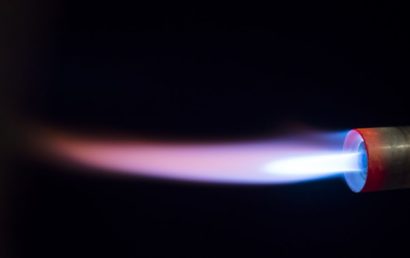Solar Thermal Mirror Coatings Can Provide Corrosion Protection
One of the greatest discoveries of modern science is the fact that, from sunshine, a concentrated production of energy is possible. On the basis of parabolic-trough technology, sunlight is converted to heat. Placed in long rows, large mirrors with a parabolic shape can be found in centrally located power plants. It’s their job to focus the radiation of the sun and concentrate it 80-fold.
A heat transfer medium is located in the center of each mirror. By way of heat exchangers, this generates steam. Conventional electric turbines are driven by this steam. Alternatively used for power generation at night, heat accumulators collect energy.
Solar thermal mirror coatings help protect the invaluable parts of this system.
The Effects of Mother Nature
The solar mirrors referred to above (parabolic trough) are, during operation, exposed to environmental demands of an extreme nature. With the right protective coating, these mirrors provide much-needed guarding against the elements. However, the intensive and precise reflection performance of these mirrors determines the efficiency of an entire solar power plant.
Both efficiency and effectiveness are reduced if a polymer corrosion protection coating of a conventional nature is used. Therefore, it is essential that a proper and appropriate plasma coating be used for the process. A nanocoating (full surface) that offers corrosion protection that is reliable will be a glasslike coating material, and almost completely inorganic. Even at temperatures of a higher nature, the material must offer long-term stability.
Photovoltaic Systems
It is not at all uncommon for the weathering process to damage photovoltaic modules. Moisture diffusion (the penetration of moisture) rapidly diminishes the performance of solar cells. Using a plasma pretreatment, photovoltaic solar modules’ quality can be increased in the following ways:
- Plasma process nanocoating of the solar cell surface provides reliable anti-corrosion protection.
- To the back rail and frame, high-strength bonding of the solar modules.
- For the J-box (junction box) on the reverse side, watertight bonding and sealing.
- For diffusion resistant and durable bonding, clean contact surfaces.
- The wettability of the glass cover increases.
Solar Cell Manufacturing Challenges
Possibly the biggest module and solar cell manufacturing challenge is to be able to achieve all of the following at the same time:
- Maintain high quality standards
- Achieve more cost-effective manufacturing
- Create simpler manufacturing methods
- Greater efficiency
In the manufacturing of solar cells, low-pressure coating, etching, and plasma processes are firmly established.
Under atmospheric pressure, the following two high-efficiency solutions are successfully being utilized…
For the coating of solar modules, new potential is found in plasma polymerization. Using plasma polymer coatings, in selected zones, module surfaces can be functionally coated for the following results:
- Counteract dirt adhesion
- Provide surfaces with ultra-hydrophobic properties
- Photocatalytically prevent the growth of biofilms
- Reduced reflection – transmission is improved
Through the use of functional gases, plasma activation of solar cells:
- Using deoxidation (plasmas), removal of oxides
- For controlled removal of material, selective etching effect on wafers
A&A Coating Serves Energy Industries and More
For years, we have been providing protective coatings for various industries, including those involving solar power mirror coatings. We provide thermal sprayed coatings for wind energy industries, solar energy, power and energy industries, converting, the aerospace industry, and many, many more.
Contact us today to receive more information as to how A&A Coatings protects and enhances parts, components, surfaces, and more with thermal sprayed coatings.




